Easter in Israel
Easter is, by far and away, the most important festival in the Christian calendar, celebrating the events surrounding the crucifixion, burial, and resurrection of Jesus. Being able to spend Easter in Israel is an incredible experience for any visitor, let alone a pilgrim. For Christians, a trip to the Holy Land has no equal, and being able to make a pilgrimage here, particularly at the time of Easter, where Christ’s last days on earth took place, is always very moving and emotional.

Easter eggs. Photo by Michal Balog on Unsplash
The actual dates of Easter are not ‘fixed’ (as is the case with Christmas) and the week itself, beginning with Palm Sunday and ending exactly a week later on Easter Sunday, are based on the lunisolar calendar (which is the solar year plus the Moon phase - actually similar to the Hebrew calendar).
Whilst the ‘central events’ of the week take place in Jerusalem, both on the Mount of Olives and the Old City, there are many ceremonies that take place across the country, in Haifa, Nazareth, and Jaffa, which are very interesting to watch, as well as participate in. Let's take a closer look at some of the events taking place in these cities to commemorate the last days of Jesus’s life, followed by the jubilant celebrations marking his resurrection.
Easter in Jerusalem
Easter in the Holy Land is a time like no other, and no more so than in Jerusalem, the capital of the Holy Land. In the days preceding Palm Sunday, Jerusalem begins filling up with tourists arriving with Christian tours of Israel, many of whom will not just be witnessing the events but taking part in them personally (having obtained tickets for the Palm Sunday Procession Tour). Easter Sunday in 2022 falls on 17th April, but special services will commence and continue the entire week, commencing on Palm Sunday, on 10th April culminating on Easter Monday on 18th April.
If you do decide to attend these celebrations, be prepared for large crowds and a fair bit of pushing and shoving in the Old City, as spectators jostle for the best places to see the view of the processions. Of course, it’s worth it - it’s a moving and often overwhelming experience to be in the city - and walking the Via Dolorosa (the ‘Way of Sorrows’) - where Jesus took his final steps.
From Palm Sunday (commemorating the moment Jesus rode into Jerusalem, riding on a donkey), Maundy Thursday (where you can see Priests and Ministers washing the feet of their parishioners, emulating Jesus washing the feet of his disciples) to Good Friday (a solemn experience, to say the least), Holy Saturday (with the extraordinary spectacle of the ceremony of the Holy Fire in the Church of the Holy Sepulchre) and the jubilation that accompanies Easter Sunday (with pilgrims crying out ‘Christ is Risen), this will be a week you will never forget. For more of an in-depth look at what happens in Jerusalem at this time, take a look at our article ‘Easter in Jerusalem.’
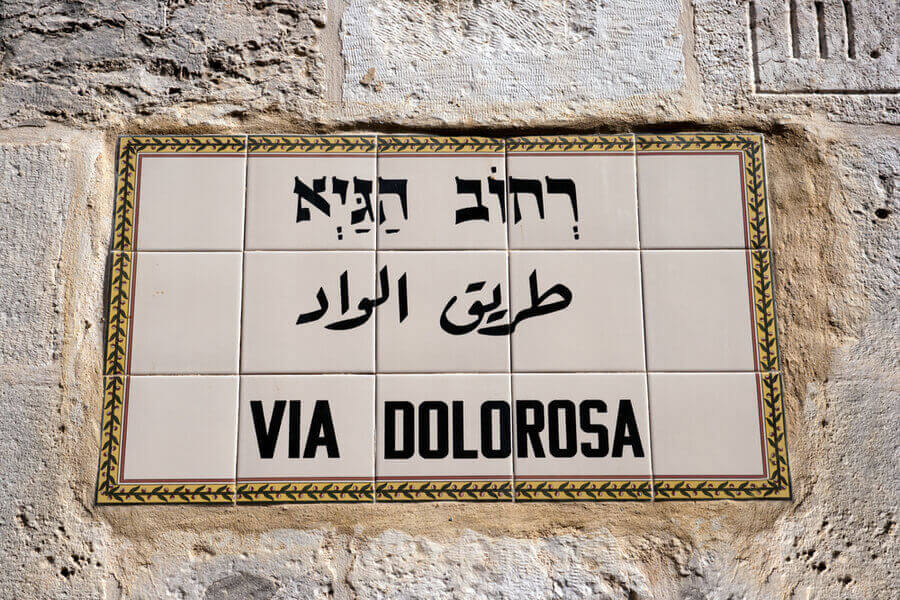
Via Dolorosa, Jerusalem. Photo credit: © Shutterstock
Easter in Tel Aviv-Jaffa
There are several churches - both Protestant and Catholic - in Jaffa, (which sits next to Tel Aviv) and events celebrating Easter week are held throughout the week at Tel Aviv’s largest Catholic and Protestant Churches, based in Jaffa in the South of the city.
St. Peter’s Church - there are services held in English, Polish, Spanish, and Hebrew on Holy Thursday, Good Friday, the Easter Vigil, and Easter Sunday. This is a Franciscan church that sits at the top of the Jaffa hill (which has served as a strategic point for thousands of years). The church is large and beautiful, built at the beginning of the 20th century in baroque style. According to historians, Napoleon stayed here during his 1799 campaign. The church faces towards the Mediterranean Sea and on the walls are paintings depicting the fourteen Stations of the Cross that Jesus trod, en route to Calvary on the day of his crucifixion.
St Anthony’s Church - this Franciscan Catholic church, located on Yefet Street, is built in a Gothic revival style and is noticeable because of its bell tower. Built in 1932, it is Jaffa's largest church and has an active community. Easter Services are held in English, Arabic, and Philippine throughout the week. St. Anthony's overlooks the harbor and many of its nuns, in the past, worked in the nearby French hospital. Today, the church is popular with migrant workers, especially those from Asia, and the priest is said to be very welcoming.
The Immanuel Church in Jaffa is of the Protestant denomination. It was built in 1904 to serve the local German Evangelical community but after 1940 it remained empty, until 1955 when the building was transferred to the control of the Norweigan Church Ministry. Today, it is popular with different Protestant groups but also used by Messianic Jews. Over Easter, services and concerts are held continuously - for more specific information, check their Facebook page.
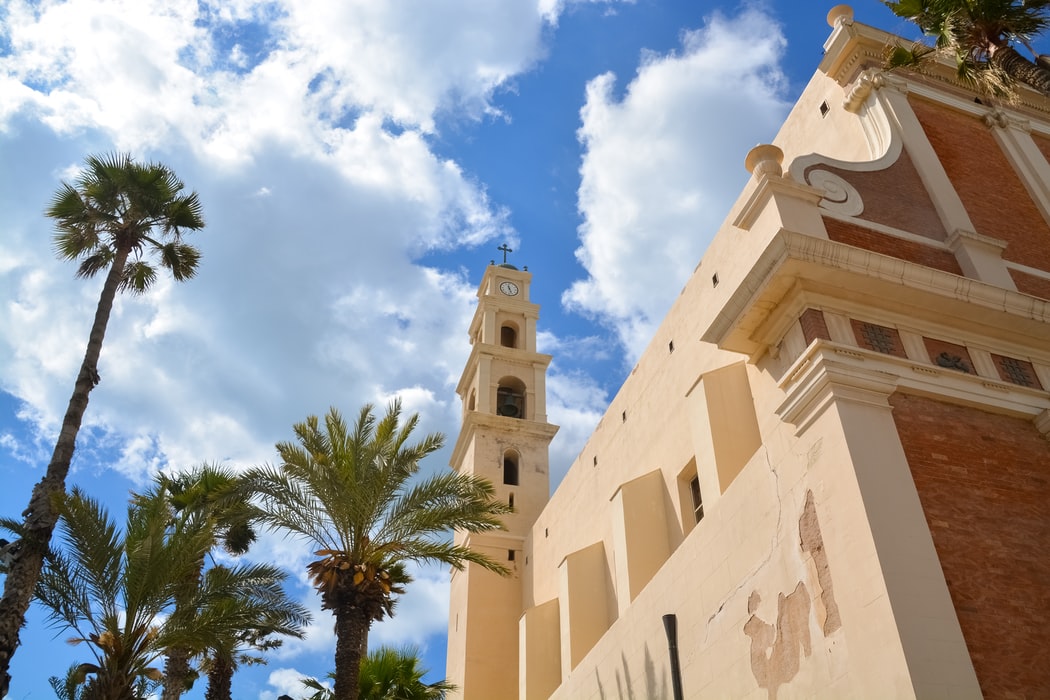
St. Peter’s Church, Jaffa. Photo by Jeremy Zero on Unsplash
Easter in Nazareth
Nazareth holds a special place in the hearts of Christians since it was the city where Jesus spent much of his childhood. There is a number of Nazareth churches, all of which celebrate Easter in their own style.
The Basilica of the Annunciation - According to Catholic tradition, this was the spot at which the Angel Gabriel appeared before Mary and announced that she would bear a child (i.e. Jesus). Built in 1958, over the remains of what were once Byzantine and Crusader houses of worship, today, it is the largest Catholic church in the Middle East.
Inside, there are beautiful mosaics of Jesus and Mary, located in the portico, as well as a spiral staircase at the top of which is a beautiful Dome. Over Holy Week, a number of services are held including mass, reconciliation, and solemn prayer, as well as an Easter Vigil and sunrise service. When the church is at capacity, it is even possible to follow on live stream!
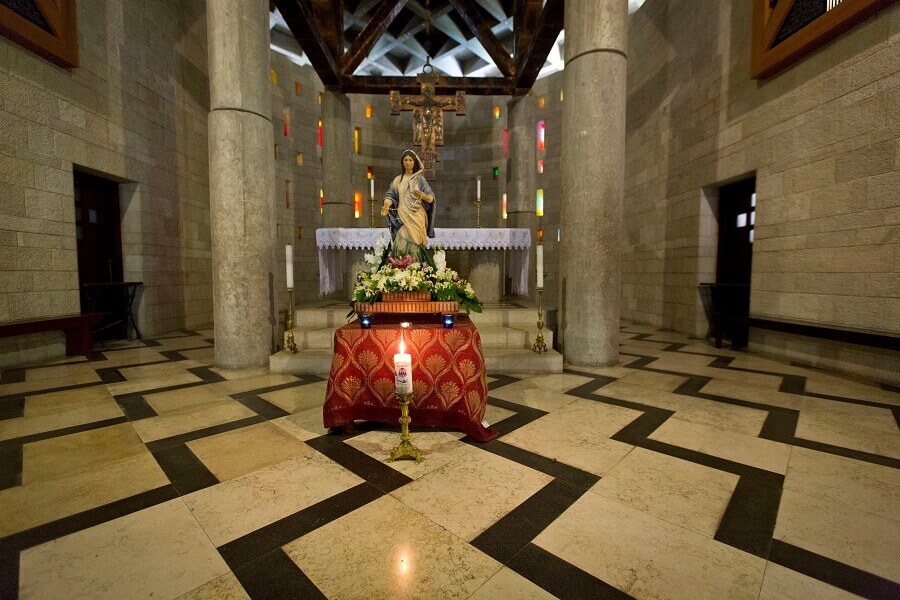
Interior of the Church of the Annunciation, Nazareth. Photo credit: © Shutterstock
St. Gabriel’s Church - Also known as the Greek Orthodox Church of Annunciation, it is of Eastern Orthodox origin and is located in downtown Nazareth and is the largest Christian church in the East. Built in a modern style, Inside it boasts beautiful stained glass murals and lovely murals. Its old stone steps lead down to a beautiful spring. Holy Week is celebrated at St. Gabriel’s with prayers, homilies, services, and a Vigil.
In Nazareth, visitors can walk through the city’s alleyways on Palm Sunday, accompanying the local residents and many other devout Christians in a procession. What is very nice is the special musical compositions that are played at this time. Easter week in this northern Israel city is a good example of how Easter is celebrated as a colorful grassroots religious festival.
Easter in Haifa
Haifa is actually home to a number of Christian communities and any visitor spending time there over Easter will be able to enjoy the traditional procession there, where locals and pilgrims walk through the streets, waving palm leaves and passing by the city’s churches.
The annual procession begins at the St. Elias Greek Orthodox Church. This Melkite Cathedral was designed by architect Sammihom Atallah and built between 1938 and 1939. It then continues onto St. Joseph’s Catholic Church, administered by the Carmelites, and members of this congregation join the procession at this point. It then passes by the Latin Church (looked after by three Carmelite friars), moves onto the St. Luke Maronite Church, and concludes at the New Orthodox Church.
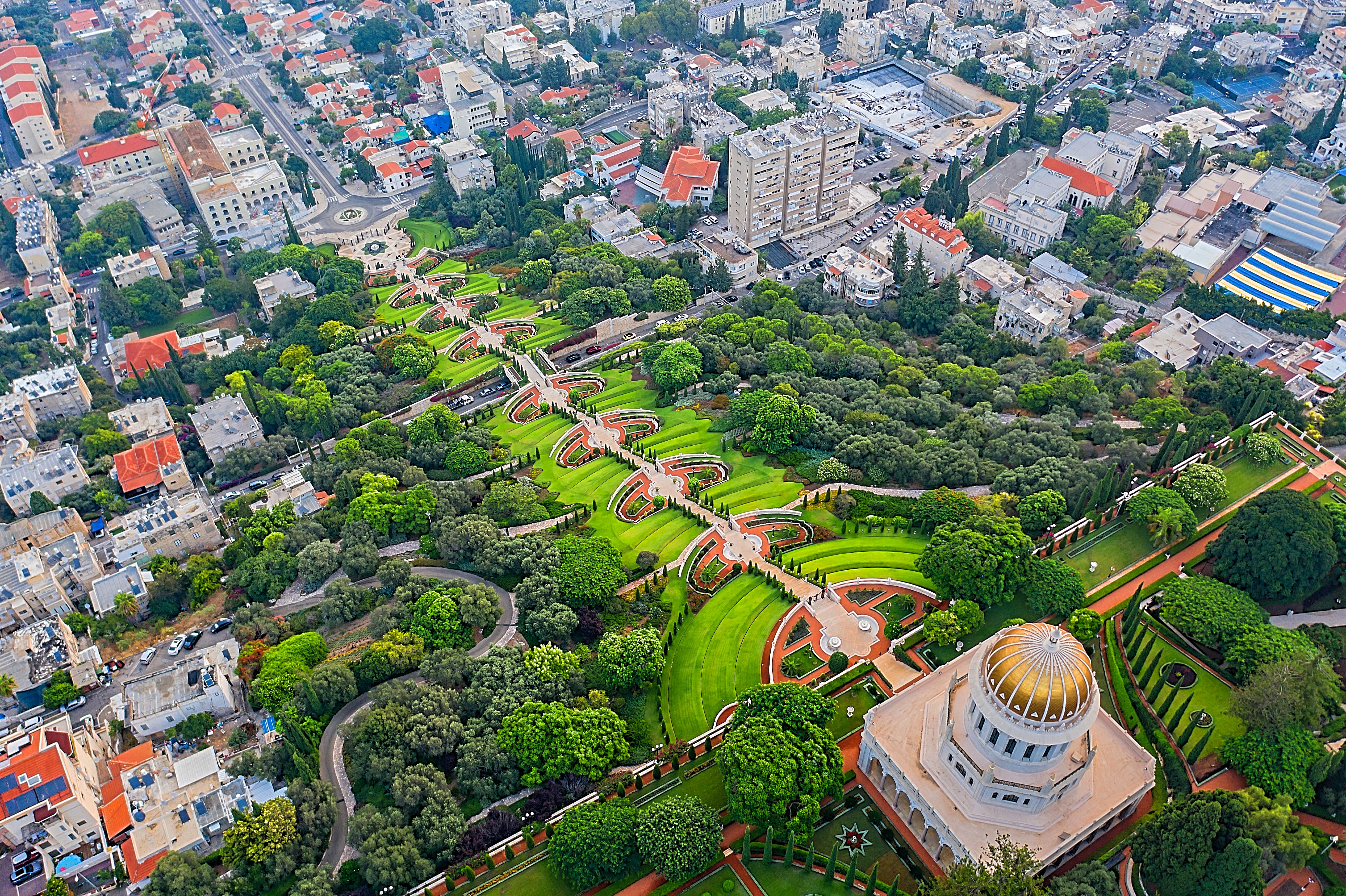
Haifa aerial view. Photo by Shai Pal on Unsplash
Easter in Bethlehem
Bethlehem is a special place for Christians, being the birthplace of Jesus. Holy Week there, as everywhere else, begins on Palm Sunday and ends on Easter Sunday, during which quite a number of church services and religious processions are held.
The three most special days before Easter Sunday are Maundy Thursday (when Jesus practiced humility by washing the feet of his disciples). Good Friday (the date Jesus walked to his death, through the Old City, to Calvary (Golgotha) where he was crucified, and also Holy Saturday (known locally as Sabt El Nour). Then, religious communities are given candles lit by a ‘Holy Light’ which has traveled all the way from the Church of the Holy Sepulchre in Jerusalem.
During the Roman Catholic Holy Saturday, crowds gather in Bethlehem at the entrance to Star Street to welcome the large procession, which moves down to the Catholic Church of the Annunciation (also known as Al Bishara). Moreover, at the time of the Greek Orthodox Easter (which can be up to a week or so later), you will always see crowds standing at the city square in Beit Sahour and at Al Sahel Street in Beit Jala, ready to welcome the procession arriving from Jerusalem. As day turns to night, an Easter Vigil will begin and will continue for many hours.
The following day, of course, is Easter Sunday and is marked at every Church in Bethlehem, including the Nativity Church and the Church of St. Catherine with sunrise services and enormous celebrations. To explore Bethlehem it is recommended to join one of numerous Bethlehem tours.
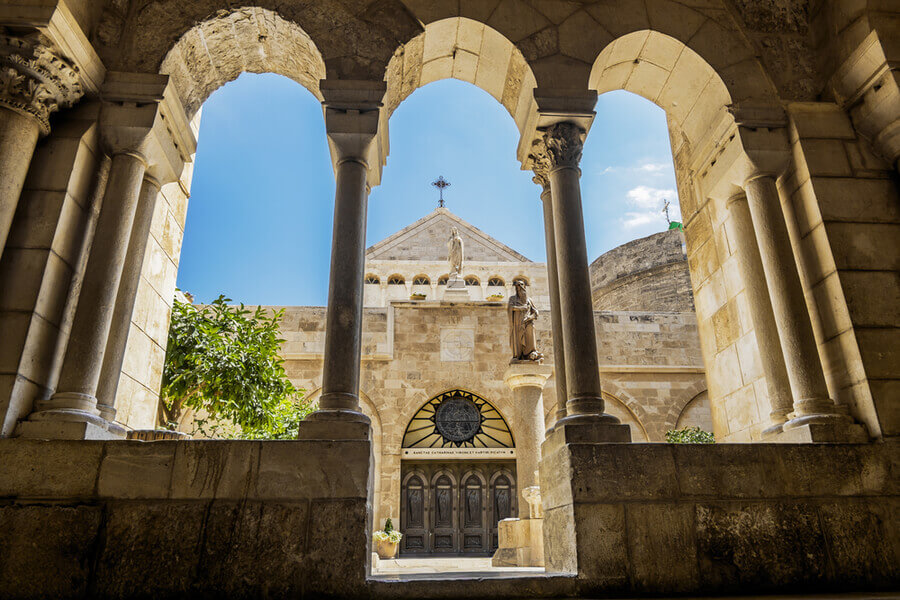
Church of Saint Catherine, Bethlehem. Photo credit: © Shutterstock
 Login / Register
Login / Register
 Contact Us
Contact Us
 Certificate of Excellence
Certificate of Excellence Guaranteed Departure
Guaranteed Departure Low Prices Guaranteed
Low Prices Guaranteed 24/7 Support
24/7 Support




